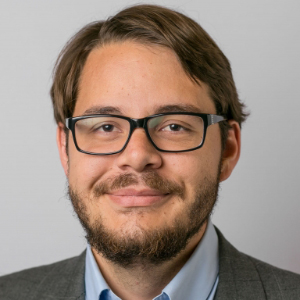A New York Times article highlights that 22 states are experiencing rapid increases in COVID-19 cases while reopening their economies. Although Texas, Florida, and Arizona have been particularly affected, the Center for Infectious Disease Research and Policy at the University of Minnesota finds most of the country is in a similar situation.
Escalating new cases have prompted many to prepare for future outbreaks. Restaurants across Phoenix, Ariz., are reclosing to prevent COVID-19 exposure. The Arizona Department of Health Services recently directed hospitals to activate emergency plans, expanding hospital-bed capacity for COVID-19 patients.
Others believe more drastic actions are required. Columbia University virologist Dr. Angela Rasmussen recently said that “at least 4 states are going to need to reinstitute stay-home orders this week—like NOW—to stop upward case trajectories.”
New York may soon become one of those states. New York Gov. Andrew Cuomo recently threatened to reinstate a lockdown for Manhattan and the Hamptons if citizens continued to (allegedly) violate social-distancing rules. In his own words, “I’m not going to allow situations to exist that we know have a high likelihood of causing an increase in the virus.”
Unfortunately, the only ways to end the pandemic are herd immunity, prolonged lockdowns, or the development of a vaccine. Each option comes with its own downsides.
Herd immunity would likely require 70 to 90 percent of the population to contract COVID-19, endangering the lives of millions with preexisting conditions. Reinstituting widespread lockdowns would likely extend depression-like economic hardship and the mental toll of prolonged isolation.
Developing a vaccine, although much less invasive than the other options, will require pioneering medical breakthroughs at record speed.
Hoping to beat the odds, President Trump launched Operation Warp Speed last May. The operation creates a partnership between private drug developers and several federal agencies to develop and distribute a vaccine by January.
Having considered 14 different drug developers, Operation Warp Speed recently selected five finalists for its partnership. Sparing no expense, it has distributed over $2 billion in R&D funds to these producers.
But why only five?
Even the most promising potential vaccines are just beginning the large-sample human-testing vaccine approval process, the most time-consuming and difficult component. With over 100 vaccines under development, there are a variety of options to diversify the risk for finalists that do not receive approval.
Evidence indicates that including more drug developers would provide us with the highest chance to get a vaccine. A model created by Accelerated Health Technologies predicts that a candidate pool of 15-20 vaccines would have an 80-to-90 percent chance for one to succeed.
Perhaps more important, providing a few producers with extensive financial support is no substitute for the collaboration among a diverse set of researchers that is often required to make a medicinal breakthrough. In his book The Organization of Inquiry, economist Gordon Tullock stressed that the scientific field closely resembles the division of labor, where a large network of scientists collaborates directly or indirectly by working on narrow aspects of a larger puzzle.
Similar collaboration has brought us pathbreaking vaccine development before.
From 2014 to 2016 the Ebola virus rapidly spread through western Africa, where it caused over 11,000 deaths. Similar to COVID-19, Ebola was difficult to contain and exceptionally difficult to develop a vaccine for.
Despite the odds, scientists, public-health experts, and drug producers indirectly collaborated across the globe to create a “miracle” vaccine within a year. As one STAT article notes:
While the vaccine has come to be known as Merck’s Ebola vaccine, in reality, scores of researchers and Ebola outbreak response workers in Canada, the U.S., Europe, and Africa played a role in paving Ervebo’s path to licensure, whether that was in designing it, conducting pivotal pre-clinical studies in animals, or the clinical trials Merck used to support its application.
Our best hope to develop a COVID-19 vaccine quickly is to allow drug developers to employ a diverse set of approaches and let the scientific method dictate solutions. Unfortunately, I fear Operation Warp Speed undermines this approach with government-selected winners and losers, which decreases the chances of success. Here’s hoping I’m wrong.








